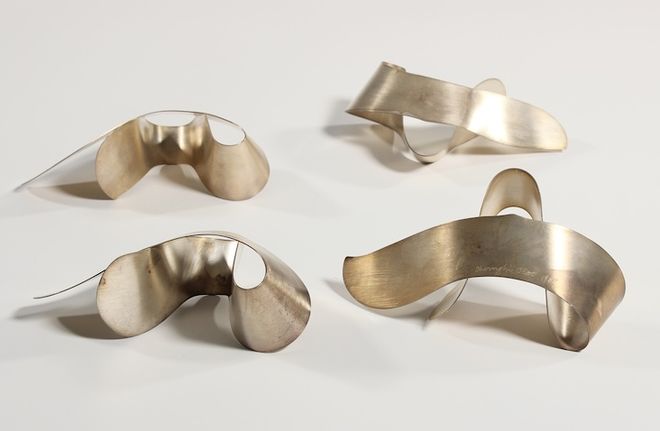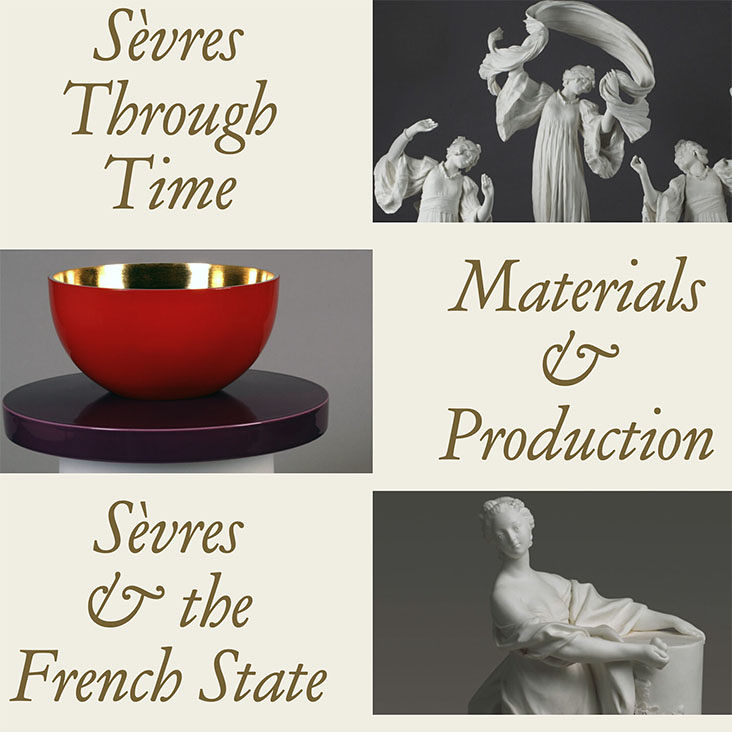
Paul J. Smith next to Madonna of the Golden Rags by Claude Horan and Floor Vase by Rudy Autio. © American Craft Council.
When Paul J. Smith, director emeritus of New York’s Museum of Arts and Design (formerly the American Craft Museum and the Museum of Contemporary Crafts) passed away, he bequeathed some sixty objects and his personal library of nearly two thousand volumes to Bard Graduate Center. Smith played a leading role in the craft movement throughout his life and built community through every aspect of his work, as a curator, mentor, educator, artist, and friend. According to Kathleen Mangan, his close friend and the executor of his estate, “He was 88 when he left this world, but he had at least ten years of projects lined up.” Smith requested that his vast collection be dispersed to a range of institutions, including BGC, the Fuller Craft Museum, John Michael Kohler Arts Center, and the UC Davis Design Museum, among many others.
Susan Weber, director and founder of BGC, said, “We are deeply honored to be a recipient of objects from the collection of Paul J. Smith. He was a towering figure in our field, and I’m so pleased that, through this bequest, the next generation of scholars and curators studying at BGC will deepen their understanding of who he was, what he collected, and the important role he played in advancing the studio craft movement.”
Smith had a special interest in preserving history, especially when it came to the studio craft movement, as demonstrated by his extensive library. Unsurprisingly, it focused on studio craft and included an excellent array of small exhibition catalogues and unique pamphlets. Students have already started working with the collection and are excited by the range of materials
According to Mangan, “[Smith] had files on top of files on top of files.” So it seems. Ninety boxes of Smith’s personal papers went to the Archives of American Art, totaling seventy-five linear feet. His collection was so extensive that the estate appraisal was seven hundred pages long. “He just wanted students and historians to get it right,” Mangan continued, “and he felt like BGC students were good at that.”
Smith also bequeathed about sixty objects in clay, fiber, metal, and wood originating from all over the globe to BGC’s Study Collection. According to Barb Elam, the digital collections metadata librarian and Study Collection manager, the Study Collection offers a unique opportunity for BGC students. After undergoing Elam’s handling tutorial, students can observe the objects closely, and touch, smell, and listen to them.
BGC staff and faculty teamed up to select pieces from Smith’s collection that reflect techniques and cultures not yet represented in the Study Collection. Some of the objects include a bobbin lace figure of a girl and a bird, attributed to the Czech lacemaker Luba Krejci; one set of four napkin rings by Chunghi Choo; a large North African terra-cotta jar from the late nineteenth / early twentieth century; and several examples of Huichol beadwork from Mexico. The objects demonstrate the wide range of Smith’s collection.
Catherine Whalen and Ivan Gaskell, BGC faculty members who will co-teach Approaches to the Object this fall, are looking forward to having new objects and opportunities for students to do this close study. “Most of the faculty members incorporate a Study Collection assignment into their courses. Students choose something and write about it,” according to Emma Cormack (MA ’18), the collection’s curator.
Many objects in the Study Collection are gifted from people who are known to and are a part of the BGC community, including faculty, board members, and former fellows. “A huge part of what BGC teaches is investing in the biography of an object,” Elam said. “In this case, it is really interesting that Paul J. Smith, the renowned scholar, collected these things. It is an important aspect of the objects’ lives.”

Set of Four Napkin Holders. 1987. Chunghi Choo (American). Raised and formed silver. Bard Graduate Center Study Collection, Gift of the Estate of Paul J. Smith.
In addition to the donation of his library and the Study Collection objects, Smith bequeathed funds for processing the gift. “I have to say, in my twenty-five years of doing this work, I’ve rarely seen a collection donation that comes with financial support,” said Heather Topcik, the dean and director of libraries at Bard College and Bard Graduate Center. “It makes a big difference in the life of a collection and keeping it active.” The financial donation allowed BGC to bring in a specialized fellow and a project cataloguer for the collection.
Namita Gupta Wiggers was selected as the Paul J. Smith Fields of the Future Fellow for fall 2023. During her fellowship, she curated a tribute to the scholar, using books, ephemera, and objects from his estate. “Namita is a great educator and wants to capture this aspect of craft history,” Whalen said. “She did a really nice job showcasing not only Paul’s work as a curator but his artistic output. What she chose to include were things I consider very signature about Paul.”
In tandem with the tribute, Barb Elam created a companion display in BGC’s Object Lab highlighting Gupta Wiggers’s observations about pieces in the collection. Reflecting on the layers of Smith’s gift to Bard Graduate Center, Mangan said, “It feels like a perfect encapsulation of that long relationship. All these gifts—the library, the papers, Paul’s photographs— will intersect as research continues in the future. I think that they will be enormously helpful to students and people writing about the studio craft movement as time goes on.”
If you are interested in supporting BGC through a bequest or donation to the Study Collection please contact Lindsay Smilow, chief advancement officer, at lindsay.smilow@bgc.bard.edu.










